Amelia Earhart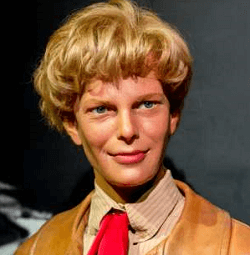
Amelia Mary Earhart was a pioneer in aviation and a writer in America. Earhart became the first female pilot to fly the Atlantic Ocean alone. In addition to breaking numerous other records, she was one of the first pilots to advocate for commercial aviation, wrote the finest books about her flying adventures, and played a crucial role in establishing The Ninety-Nines, an association for female pilots. Earhart was brought up in Atchison, Kansas, and then moved to Des Moines, Iowa. She showed an early interest in adventure and began to obtain flying expertise in her twenties. Earhart accompanied pilot Wilmer Stultz across the Atlantic for the first time as a passenger in 1928, and as a result, she rose to fame. Earhart was the first woman to complete an uninterrupted solo transatlantic trip in 1932 while flying a Lockheed Vega 5B. She was awarded the Distinguished Flying Cross of the United States for her achievement. Earhart started working as a visiting professor at Purdue University in 1935, where she advised female students interested in careers in aviation engineering. She supported the Equal Rights Amendment early and was a National Woman's Party member. Amelia Earhart, one of the most significant American aviators of the late 1920s and early 1930s, is frequently compared to Charles Lindbergh's early aviation career as well as to people like First Lady Eleanor Roosevelt because of their close friendship and enduring impact on the issue of women's causes during that time Early LifeChildhoodEarhart was the daughter of Samuel "Edwin" Stanton Earhart and Amelia "Amy" Earhart. She was born in the residence of her maternal grandfather, Alfred Gideon Otis (1827-1912), a well-known local figure and a former federal judge in Atchison, Kansas. She also rose to the position of president of the Atchison Savings Bank. After an infant died during pregnancy in August 1896, Earhart was the couple's second child. She had some German ancestry. Initially opposed to the union and dissatisfied with Edwin's advancement as a lawyer, Alfred Otis later changed his mind. 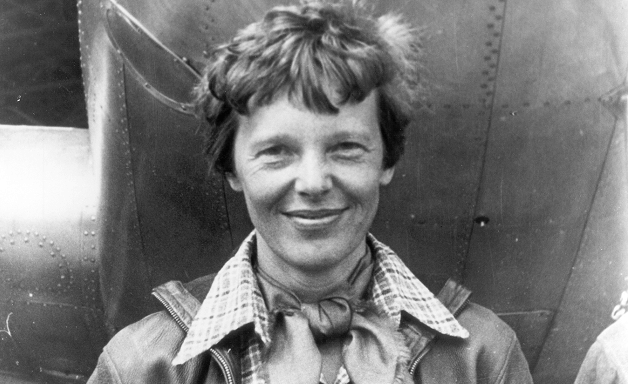
Earhart was given the names of her two grandmothers, Mary Wells Patton and Amelia Josephine Harres, following family tradition. Earhart, two years younger than her sister Grace Muriel Earhart (1899-1998), served as the ringleader from a young age, with Grace as the obedient follower. Each Amelia and Grace had childhood monikers, "Meeley" (occasionally "Millie") and "Pidge," which they both answered well into adulthood. Their upbringing was unusual because Amy Earhart did not think raising her kids to be "good little girls" was necessary. Although Earhart appreciated the liberty of movement they allowed, she was conscious that the girls in the area wore gowns. However, their maternal grandmother frowned upon the "bloomers" they wore. EducationWhile their parents moved into new, more compact housing in Des Moines, their sisters Amelia and Muriel stayed with their grandparents in Atchison. The mother and governess of the Earhart girls taught the girls at home during this time. Amelia later recalled how she loved to read and spent much time in the spacious family library. The Earhart children attended public school for the first time in 1909. At 12, they started seventh grade after reuniting the family in Des Moines. The Spanish flu pandemic of 1918Earhart worked demanding schedules at the Spadina Military Hospital, including night shifts, when the 1918 Spanish flu pandemic struck Toronto. She grew ill herself, with maxillary sinusitis and pneumonia. She had discomfort and pressure in the area surrounding one eye, as well as a lot of mucus from her nose and mouth. Due to pneumonia, she was admitted to the hospital in early November 1918 and released in December 1918, or around two months after the sickness had begun. 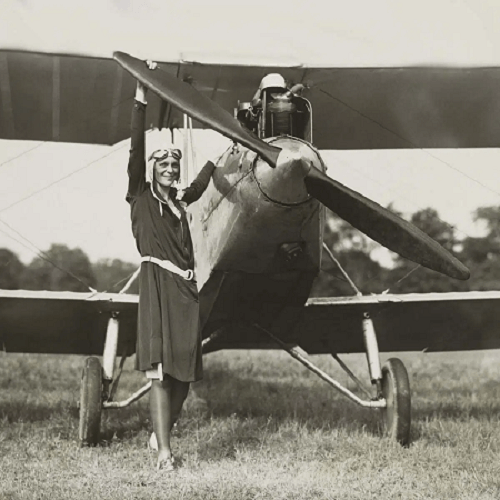
While in the hospital, Earhart underwent a painful minor operation to wash out the infected maxillary sinus, however, the process was unsuccessful, and Earhart's headaches worsened. She spent most of her nearly one-year convalescence at her sister's house in Northampton, Massachusetts. She spent her time reading literature, studying mechanics and poetry, and becoming a banjo player. Later in life, Earhart's activities were considerably impacted by chronic sinusitis; sometimes, she was even required to hide a tiny drainage tube on her cheek while on the runway. Financial crisisFollowing a terrible investment in a failing gypsum mine, Amelia Earhart's legacy from her grandmother, now managed by her mother, progressively decreased through the early 1920s until it was gone. Because she had little chance of recovering her investment in flying shortly, Amelia Earhart sold the "Canary" and a second Kinner. She acquired a yellow Kissel Gold Bug "Speedster" two-seat car called the "Yellow Peril". As her discomfort increased concurrently, Earhart endured an aggravation of her prior sinus condition. In early 1924, she was hospitalized for a second failed sinus procedure. Earhart changed course after attempting many endeavours, including starting a photography business. Historical flightsAfter the war, Earhart enrolled in Columbia University's pre-med program in New York City, but she left in 1920 because her parents urged her to reside with them in California. In 1920, she took her maiden flight there, which inspired her to enrol in flying classes. She purchased a Kinner Airster as her first aircraft in 1921, and after two years, she received her pilot's license. 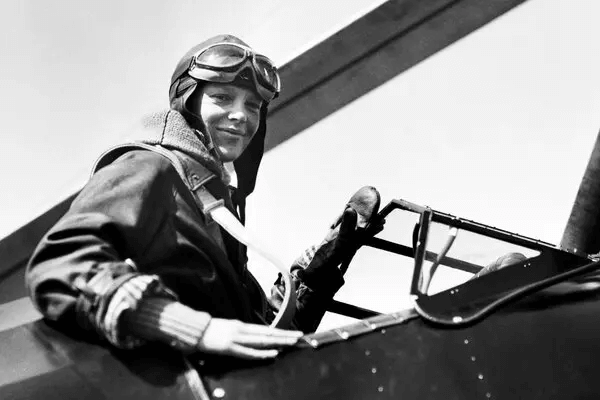
Earhart relocated to Massachusetts in the middle of the 1920s, when she took a job as a support worker at the Denison House, a Boston settlement house for newcomers. She kept pursuing her passion for flying as well. Promoters were looking for a woman to fly across the Atlantic around this time, and in April 1928, Earhart was chosen for the trip. Some theorized that the choice might have been influenced partly by Charles Lindbergh's likeness, who had accomplished the first nonstop solo transatlantic flight the year before. Earhart departed Trepassey, Newfoundland, Canada, on June 17, 1928, in a seaplane flown by Wilmer Stultz and Louis Gordon. After she arrived in Burry Port, Wales, on June 18, Amelia Earhart rose to fame worldwide. She published a book called 20 Hours, 40 Minutes (1928) that detailed the flight and went on a lecture tour throughout the country. Publisher George Palmer Putnam, who had assisted in planning the historic flight, managed a large portion of the publicity. Even after she married in 1931, Earhart kept using her maiden name to do business. She also drove an autogiro to a record-breaking height of 18,415 feet in that same year (5,613 meters). Earhart sailed across the Atlantic by herself on May 20-21, 1932, determined to live up to the fame her voyage in 1928 had brought her. Despite several issues, she completed her Lockheed Vega journey from Harbour Grace, Newfoundland, to Londonderry, Northern Ireland, in a record 14 hours and 56 minutes. 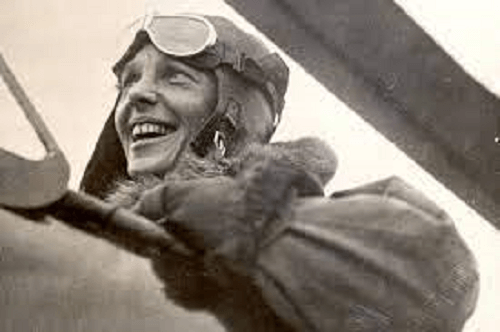
She had significant mechanical issues and bad weather, so she could not arrive in Paris as planned. In The Fun of It, which she later published, she penned about her life and love of flying. Then, Earhart made several flights from across the country. In addition to her flying accomplishments, Amelia Earhart is renowned for inspiring women to defy restrictive social norms and seek various opportunities, particularly in the aviation industry. She was a founding member of the Ninety-Nines, a group of female pilots established in 1929, and its first leader was Amelia Earhart. She also introduced a line of practical apparel in 1933 that was made "for the woman who lives actively." Earhart created aviation history in 1935 when she completed the first solo trip from Hawaii to California, a perilous journey that was 2,408 miles (3,875 kilometres) long and longer than the distance from the United States to Europe. She took out from Honolulu on January 11 and arrived in Oakland the next day after travelling for 17 hours and 7 minutes. Later that year, when she flew by herself from Los Angeles to Mexico City, she created history. Final flight and disappearanceAfter travelling 22,000 miles to complete her world circumnavigation, Amelia Earhart and her navigator, Fred Noonan, disappeared over the Pacific Ocean on July 2, 1937, twenty-two days before she turned forty. Their last known location was between Howland Island and Lae, New Guinea. The U.S. Navy's largest-ever search for a single missing jet turned no sign of the aircraft or crew. Since then, other investigations have yielded the same results. A shoe and a metal plate were discovered by an expedition in 1992 on the tiny atoll (island) of Nikumaroro, south of Howland, which Earhart and Noonan may have abandoned. 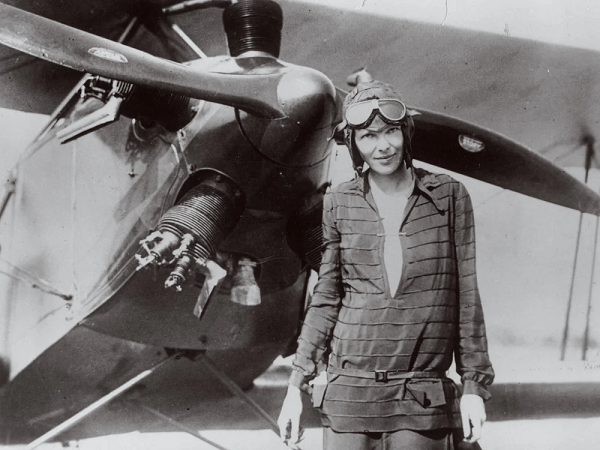
On the day when Earhart would have been 100, the incident happened. Finch finally finished her journey with the same route Amelia Earhart would have taken worldwide. She was a mainstay of pop culture and the focus of several books and films. The public's fascination with Earhart's disappearance led to many speculations and assertions. Some conjectured that she and Noonan were kidnapped by the Japanese, while others asserted that they had landed on another island after failing to find Howland. However, no unambiguous proof of such assertions was discovered. Most experts believe Earhart's plane ran out of fuel and crashed in the Pacific Ocean close to Howland. LegacyEarhart was a well-known international figure during her lifetime. Due to her endearingly endearing attractiveness, independence, tenacity, coolness under pressure, bravery, goal-oriented vocation, and the circumstances surrounding her disappearance at a relatively young age, she has retained a long-lasting reputation in popular culture. Numerous books and articles have been written on her life, and it is regularly used as an inspiring narrative, especially for ladies. Earhart is typically seen as a symbol of feminism. Amelia Earhart's aviation successes inspired the more than 1,000 women pilots who served in the Women Air force Service Pilots (WASP), transported military aircraft, pulled gliders, flew target practice aircraft, and worked as transport pilots during World War II. The Amelia Earhart Birthplace Museum is kept at the home where Earhart was born by The Ninety-Nines, a worldwide association of female pilots of which Earhart was the first elected president.
Next TopicAriana Grande
|
 For Videos Join Our Youtube Channel: Join Now
For Videos Join Our Youtube Channel: Join Now
Feedback
- Send your Feedback to [email protected]
Help Others, Please Share









